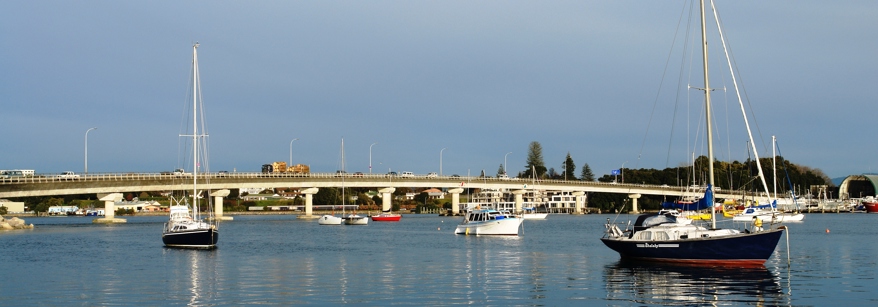Who gives way? When two boats are approaching each other, one has the right of way. The ‘give way’ rules depend on what type of boat you’re on and the type of boat you’re approaching.
Make sure your actions are clear, taken in good time and do not take you close to other vessels. Ignorance of the rules is no excuse.
Overtaking - power boats and sail boats
All boats (sail or power) overtaking from astern are responsible for keeping clear until finally past the boat being overtaken. Always assume that the boat in front may not be aware of your presence or intentions.
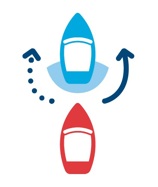
When power meets power
Powerboats meeting head on must each alter their course to starboard to pass on the port side of each other.
Keep right.
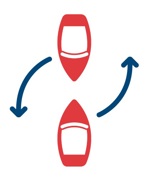
When sail meets sail
When the wind is coming from different sides: the boat with the wind on its port (left) side must give way.
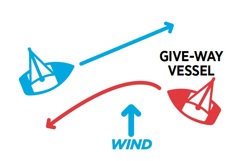
When both vessels have the wind on the same side: the upwind (windward) boat must give way.
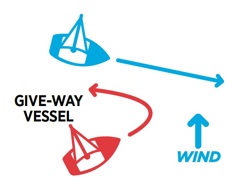
Power boats
Power boats, unless being overtaken, must always give way to sail.
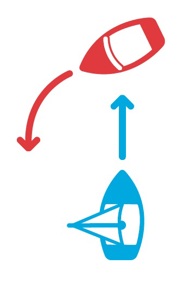

When powerboats meet at an angle, always give way to your right.
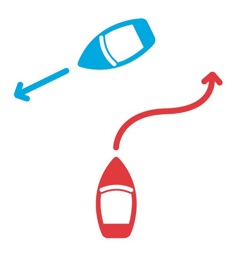
In channels
Every boat must keep to the starboard side of any channel. Smaller vessels must keep out of the way of larger vessels which may be restricted by the channel.
Shipping channels
It is important to give way to shipping. The skipper of any power boat, sail boat, paddle craft or other recreational or commercial vessel, whether underway or at anchor, shall ensure that their craft does not impede the navigation of any vessel of 500 gross tonnes or more.
Keep clear of big ships
Be aware a ship’s blind spot can extend for hundreds of metres. Never anchor in a channel.


If the pilot vessel or patrol boat asks you to move from the shipping channels, you must move promptly.
Remember that large ships need plenty of room and will be travelling a lot faster than you think, as they enter our harbours. This also means they cannot stop quickly.
Do not cross the bow of a large ship, they cannot see you. Keep your distance.
When fishing in the main Tauranga Harbour channel, allow plenty of time to move out of the way.
Why is that ship honking its horn?
Manoeuvring signals, or horns, are used by ships to indicate what they are about to do.
One short blast - 'I am turning to starboard.'

Two short blasts - 'I am turning to port'

Three short blasts - 'My engines are operating astern' - this does not necessarily mean my craft is going backwards.

Five or more short blasts - 'I don't understand your intentions' - better known as 'what on earth are you doing?'


